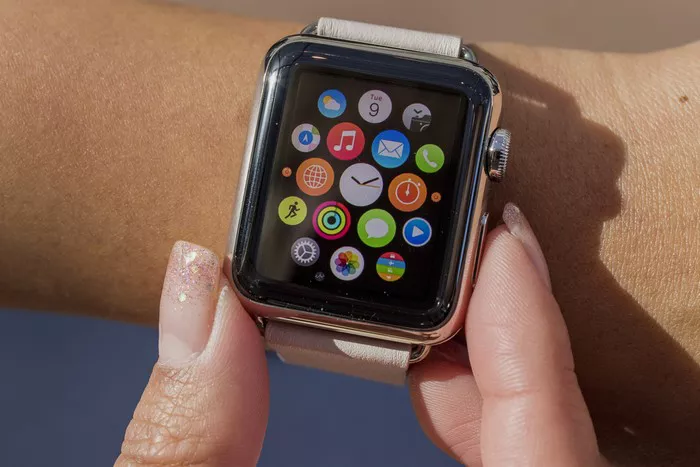The Apple Watch has become one of the most popular smartwatches on the market since its initial release in 2015. Its sleek design, wide range of features, and integration with the Apple ecosystem have made it a favorite among iPhone users. However, what if you own a Samsung phone? Can you still enjoy the benefits of an Apple Watch? In this article, we will explore whether the Apple Watch is compatible with Samsung phones and what limitations you may encounter.
Understanding Compatibility
To determine if the Apple Watch is compatible with a Samsung phone, we need to consider the operating systems and software requirements of both devices. The Apple Watch is designed to work seamlessly with iPhones, which run on Apple’s proprietary iOS operating system. On the other hand, Samsung phones primarily use Android, an operating system developed by Google.
Given this fundamental difference, the Apple Watch is not officially compatible with Samsung phones. The Apple Watch relies heavily on integration with iOS features and services, such as iMessage, Siri, Apple Pay, and iCloud. Without an iPhone, many of these functionalities would be unavailable or severely limited.
Limited Features and Functionality
While the Apple Watch may not be directly compatible with Samsung phones, there are some workarounds and alternatives that can provide limited functionality. Here are a few options to consider:
1.Basic Watch Functions: Regardless of the smartphone you use, the Apple Watch can still function as a standalone watch. You can use it to tell time, set alarms, track your fitness activities, and access basic apps like the stopwatch and timer.
2.Bluetooth Connectivity: Both Apple Watch and Samsung phones support Bluetooth technology, which allows you to pair the two devices. While this connection won’t provide full integration, you can still receive notifications, control media playback, and use some basic features like the built-in camera remote.
3.Third-Party Apps: Some third-party apps and services may offer limited compatibility between the Apple Watch and Samsung phones. For example, apps like Strava, Spotify, and Google Maps can be accessed on both devices, allowing you to sync and control certain functions.
4.Fitness Tracking: Fitness enthusiasts who own a Samsung phone can use the Apple Watch to track their workouts and health data. The watch can sync this information with various fitness apps available on both iOS and Android platforms, such as Apple Health or Google Fit.
It’s important to note that while these workarounds may provide some level of compatibility, they cannot replicate the seamless integration and full feature set that comes with using an Apple Watch alongside an iPhone.
Considerations and Limitations
While you may be able to connect an Apple Watch to a Samsung phone using the methods mentioned above, it’s crucial to understand the limitations and potential drawbacks. Here are a few factors to consider:
1.Lack of Native Support: Without native support, you won’t be able to access the full suite of Apple Watch features and services. The Apple Watch relies heavily on Apple’s ecosystem, and some core functionalities like Siri, iMessage, Apple Pay, and the App Store will be inaccessible or severely limited when paired with a Samsung phone.
2.Software Updates: Apple regularly releases software updates for the Apple Watch, which introduce new features, bug fixes, and security enhancements. These updates are typically available only for Apple devices and may not be compatible with a paired Samsung phone.
3.Limited App Availability: While some third-party apps may offer limited compatibility, many apps specifically designed for the Apple Watch may not be available for Samsung phones. This limits the range of apps and services you can access directly from the watch.
4.Customer Support: When using an Apple Watch with a Samsung phone, you may encounter challenges in terms of customer support. Apple’s customer support primarily focuses on their products within their ecosystem, which means assistance for non-Apple device pairings could be limited.
5.Future Compatibility: As technology evolves, software updates and new features may further limit compatibility between the Apple Watch and Samsung phones. It’s important to consider whether the limitations outweigh the benefits before making a purchase decision.
Exploring Alternatives
If you own a Samsung phone but desire a smartwatch with similar features and compatibility, there are several alternative options to consider. Many reputable manufacturers, including Samsung itself, offer smartwatches that run on the Android Wear or Tizen operating systems. These smartwatches are designed to seamlessly integrate with Android phones and offer a wide range of features and functionalities comparable to the Apple Watch.
Popular alternatives to the Apple Watch for Samsung phone owners include the Samsung Galaxy Watch series, the Fitbit Versa series, and the Fossil Gen 5 smartwatch. These devices offer fitness tracking, notification management, app support, and more, tailored specifically for Android users.
Conclusion
While the Apple Watch is not officially compatible with Samsung phones, there are limited workarounds and alternatives available to provide some level of functionality. By utilizing Bluetooth connectivity, third-party apps, and focusing on standalone watch features, Samsung phone owners can still benefit from using an Apple Watch to a certain extent.
However, it’s important to acknowledge the limitations and potential drawbacks of using the Apple Watch with a Samsung phone. Lack of native support, limited app availability, and potential software compatibility issues are factors that should be considered before deciding on pairing an Apple Watch with a non-Apple device.
Ultimately, if you own a Samsung phone and desire a smartwatch that seamlessly integrates with your device, it may be more practical to explore alternative options specifically designed for the Android ecosystem. These alternatives offer a wider range of features and functionalities tailored for Android users, ensuring a more cohesive user experience.

